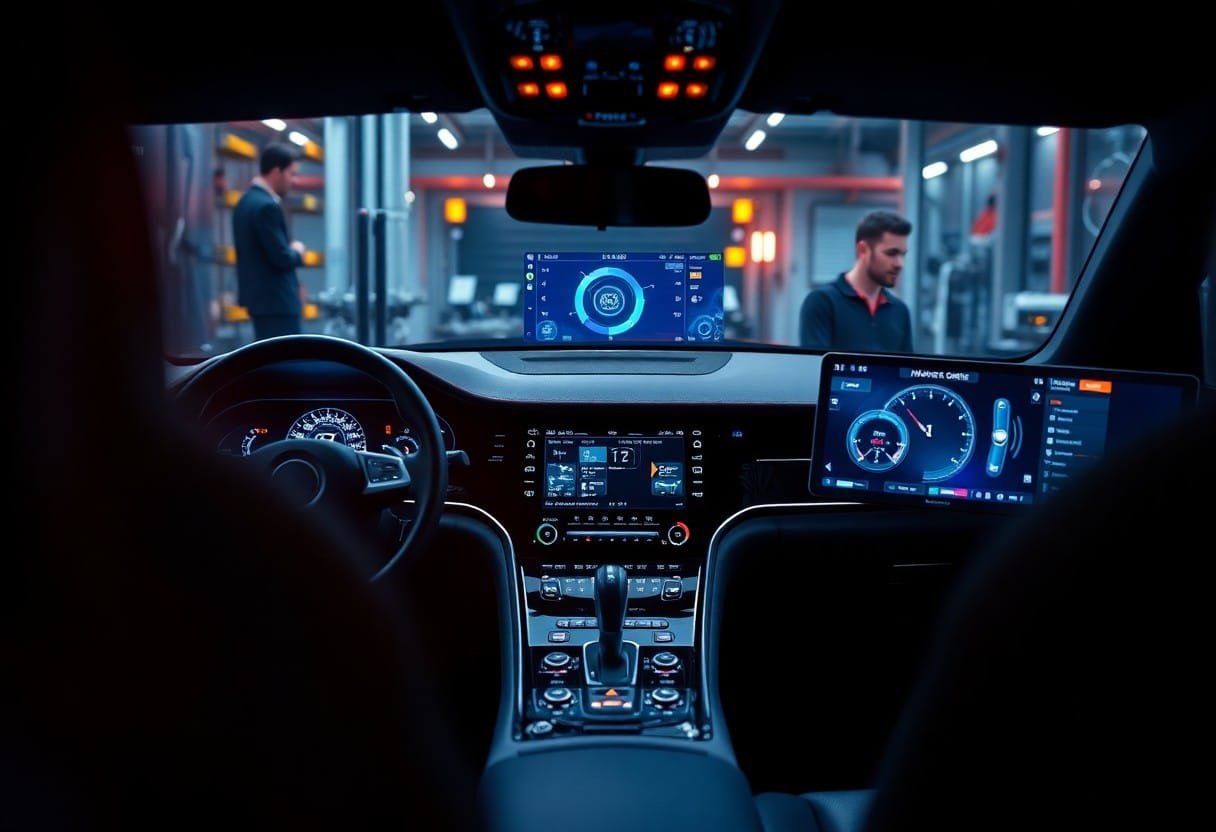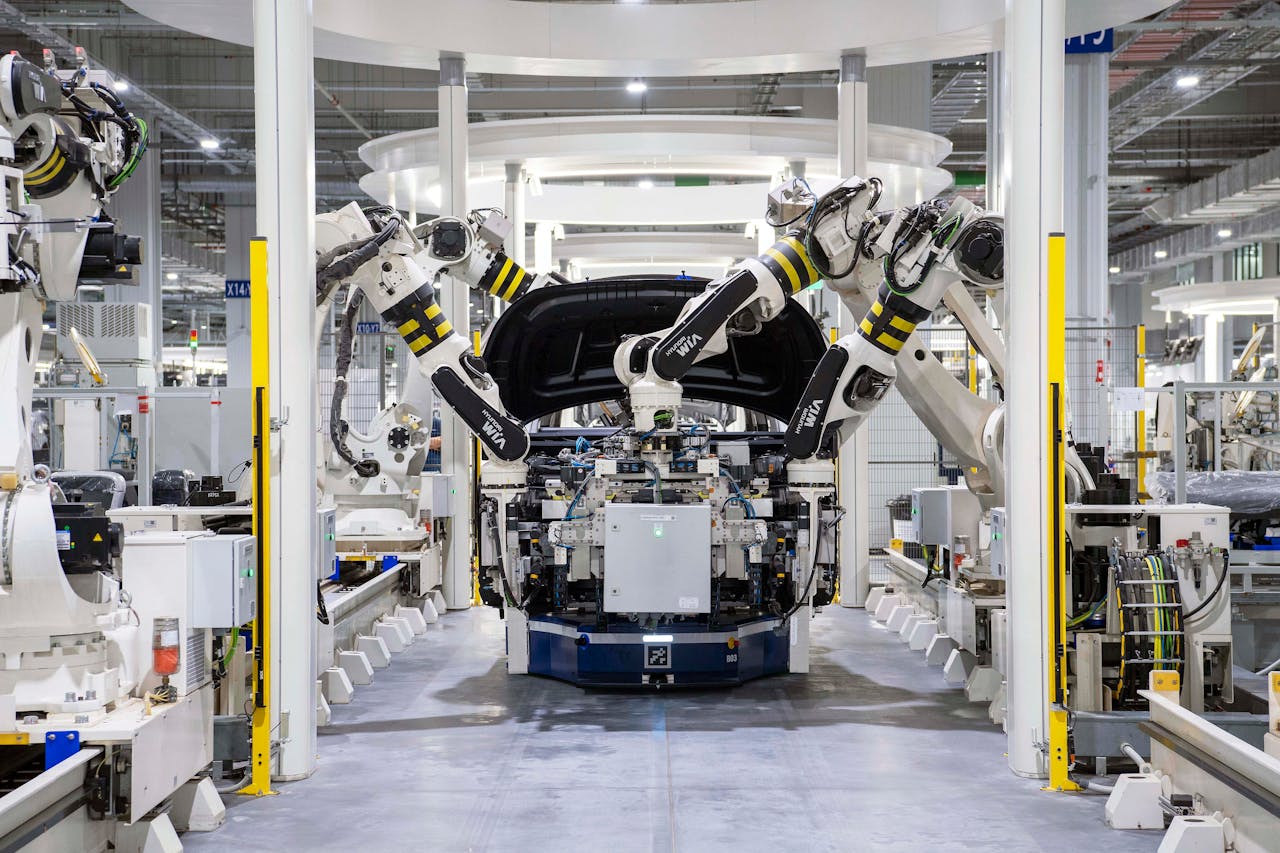Most automotive enthusiasts and everyday drivers alike are fascinated by how software is transforming the driving experience. In this post, you’ll explore the inner workings of software-defined vehicles, understanding how real-time updates and advanced software architecture are shaping the future of automotive software architecture. You’ll gain insights into the technology that makes your vehicle smarter, safer, and more adaptable than ever before, paving the way for a new era in automotive innovation.
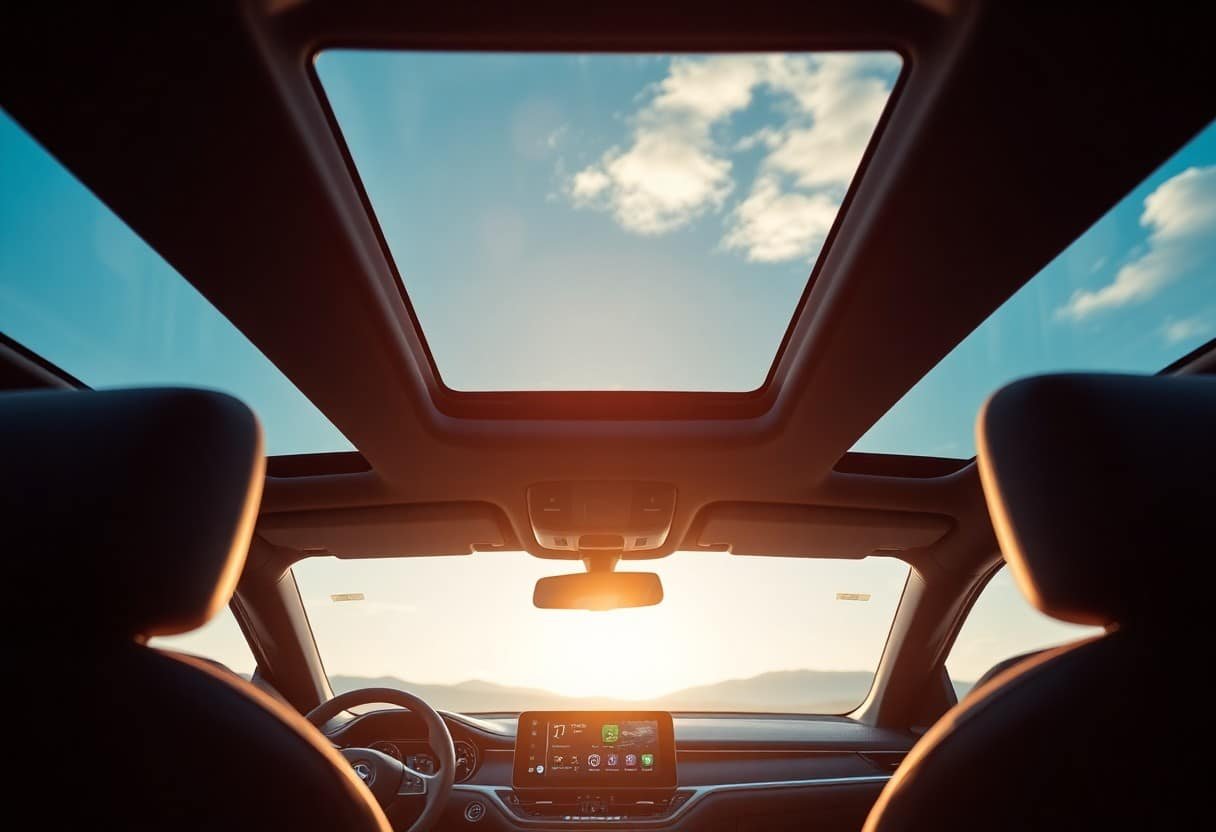
Key Takeaways:
- Software-defined vehicles use centralized software architectures to enable real-time updates and feature enhancements, reducing reliance on traditional hardware upgrades.
- Modular software components allow manufacturers to develop and deploy applications independently, fostering innovation and flexibility in vehicle functionality.
- Data-driven insights gathered from vehicle performance and user behavior can enhance safety features and personalize the driving experience.
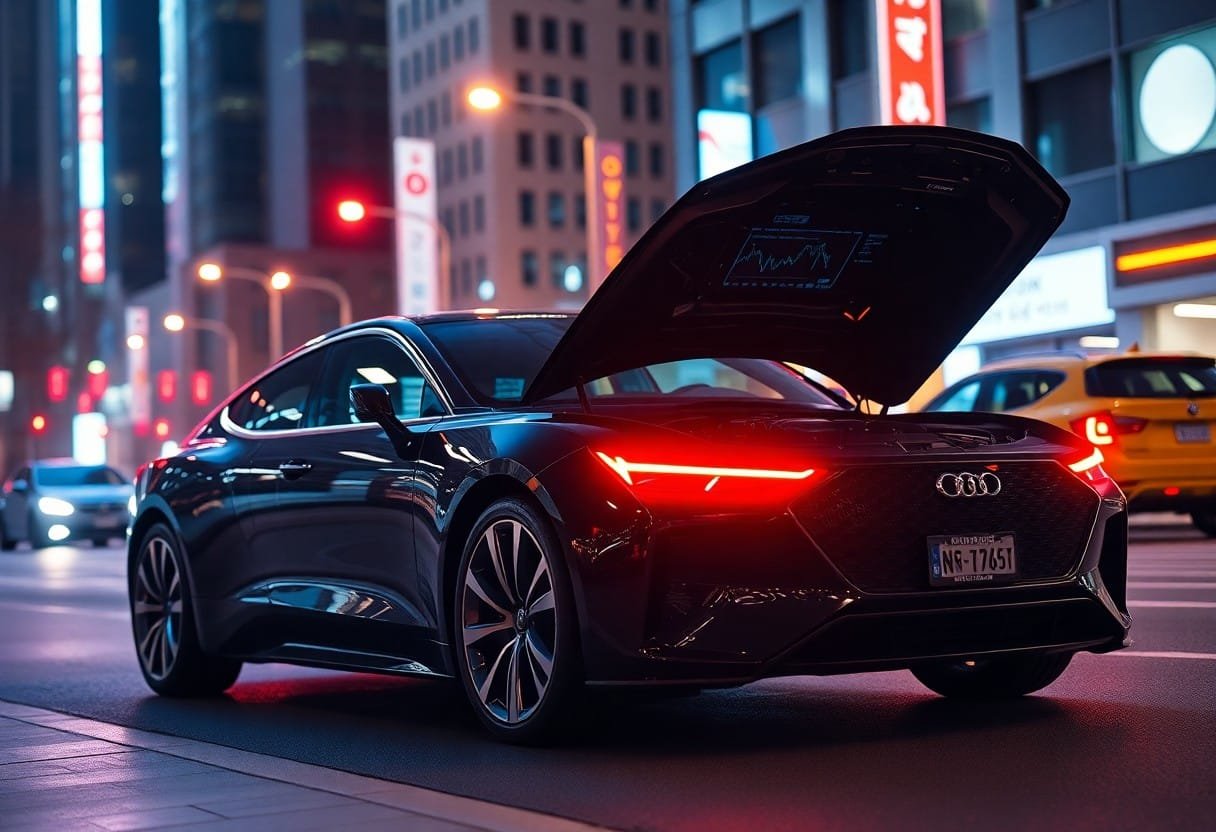
What Are Software-Defined Vehicles?
Software-defined vehicles (SDVs) represent a significant advancement in automotive technology, shifting the focus from traditional mechanical systems to flexible, software-driven architectures. These vehicles leverage sophisticated software applications to control various functions, enabling features like over-the-air updates and enhanced connectivity, all while improving safety and efficiency. This transformation empowers manufacturers to innovate rapidly and adapt features based on consumer demand and technological advancements, redefining your driving experience.
Understanding the Basics
At the core of software-defined vehicles lies the integration of software and hardware, allowing real-time data processing and system updates. This architecture lets you customize your vehicle’s performance and features, enhancing functionality beyond traditional limits. By utilizing cloud computing and machine learning, your vehicle can continuously evolve, optimizing its response and capabilities to meet your changing needs.
Key Components of Software-Defined Vehicles
Essential components of software-defined vehicles include centralized computing platforms, advanced sensors, and robust connectivity modules. These elements work in concert to enable autonomous driving capabilities, collision avoidance systems, and improved infotainment experiences. Centralized computing platforms consolidate various vehicle functions into a single system, simplifying management and software updates while enhancing performance.
Centralized computing platforms serve as the brain of your software-defined vehicle, integrating data from various sensors such as LiDAR, radar, and cameras. This setup allows dynamic adjustments to navigation and safety systems, enhancing your driving experience. Connectivity modules facilitate seamless communication between the vehicle and external networks, enabling features like real-time traffic updates and remote diagnostics. Advanced sensors, coupled with machine learning algorithms, enhance your vehicle’s situational awareness, leading to safer driving experiences and improved operational efficiency. Together, these components create a platform for innovation, allowing manufacturers to push the boundaries of what a modern vehicle can achieve.
The Evolution of Automotive Software Architecture
Historical Context
Early automotive software systems were limited to basic functions like engine control and diagnostics. As vehicles became more complex, the need for integrated software grew, leading to the implementation of embedded systems. Over the decades, manufacturers introduced features such as anti-lock braking systems and infotainment units, but these remained largely isolated. The shift towards interconnected systems began in the 21st century, driven by advancements in computing technology and communications.
Trends Leading to Software-Defined Solutions
Current trends in the automotive industry, such as the rise of electric vehicles and autonomous driving, are pushing manufacturers toward software-defined solutions. The demand for continuous updates, personalized experiences, and enhanced connectivity drives this shift, allowing vehicles to improve over time without hardware changes. Factors like regulatory pressures for safety and emissions further incentivize the adoption of sophisticated software architectures.
The growth in electric vehicle (EV) adoption highlights the urgent need for software-defined architectures. EVs require dynamic management of battery performance and charging, accessible through over-the-air updates for optimal function. Additionally, you’ll find that the emergence of connected vehicles enhances safety and comfort by incorporating features like adaptive cruise control and advanced navigation systems. As consumers increasingly expect smart technologies, automakers are prioritizing software development to create scalable, adaptable platforms capable of accommodating future innovations.
How Software-Defined Vehicles Enhance Performance
Software-defined vehicles elevate automotive performance through a combination of real-time updates and personalized features, allowing for continuous improvements and tailored driving experiences. The integration of advanced software systems means your vehicle can adapt its performance characteristics, efficiency, and responsiveness based on real-time data and user preferences, ensuring optimal operation on every journey.
Real-Time Updates and Enhancements
With software-defined vehicles, you can receive real-time updates that enhance your vehicle’s functionality without needing a dealership visit. This capability enables manufacturers to optimize performance, fix bugs, and add new features seamlessly over-the-air, keeping your vehicle current and improving safety and efficiency.
Customization and Personalization Features
Customization options in software-defined vehicles allow you to tailor your driving experience to your specific needs and preferences. From adjusting seat positions and climate settings to modifying the vehicle’s performance profiles, these features create a more enjoyable and individualized driving experience.
Extending beyond basic settings, customization in software-defined vehicles means you can set up driving modes that match your style, whether you prefer a more eco-friendly approach or a sporty performance. Additionally, you can save individual profiles for multiple drivers, ensuring that each person can enjoy their specific preferences, from infotainment systems to driver assistance settings. This level of personalization not only enhances comfort but also deepens your connection with the vehicle, making every drive feel uniquely yours.
The Role of Connectivity in Software-Defined Vehicles
Connectivity serves as the backbone of software-defined vehicles, enabling seamless communication between your car, other vehicles, and infrastructure. With advanced networking capabilities, these vehicles leverage real-time data to enhance driving experiences and optimize functionalities, such as navigation and safety systems. The result is a more responsive and adaptable driving experience, where updates and features can be managed remotely to meet your evolving needs.
Integration with IoT and Cloud Services
Integrating IoT and cloud services into software-defined vehicles allows for continuous data exchange and enhanced functionalities. By connecting your vehicle to cloud platforms, you gain access to real-time analytics, predictive maintenance, and even personalized features that adapt to your driving habits. This level of integration not only enriches your experience but also facilitates smarter decision-making for manufacturers and service providers.
Data Security and Privacy Concerns
With the rise of connectivity in automotive technology comes increased concerns over data security and privacy. As your vehicle collects vast amounts of data, including location and driving patterns, the need for robust protection measures becomes paramount. Ensuring that sensitive information remains secure is necessary to maintaining trust and safety in an increasingly connected driving environment.
Data security and privacy concerns extend beyond just protecting personal information; they encompass the potential for breaches that could compromise vehicle functionality. For instance, the hacking of critical vehicle systems could lead to unauthorized control, posing safety risks. To mitigate these threats, manufacturers are implementing advanced encryption techniques and rigorous cybersecurity protocols. Continuous monitoring and regular updates are also critical to safeguarding systems against emerging vulnerabilities, ensuring that your driving experience remains secure and private.
Challenges in Implementing Software-Defined Vehicles
Implementing software-defined vehicles presents various challenges that can impede progress and deployment. These difficulties span from technical limitations to regulatory compliance, necessitating a multifaceted approach to overcome them. As you navigate this landscape, understanding these challenges can guide your strategy in addressing potential roadblocks.
Technical Hurdles
Technical hurdles include the integration of disparate systems and ensuring reliable data communication between vehicle components. You may face challenges with cybersecurity measures, as increased connectivity exposes vehicles to potential vulnerabilities. The varying degrees of computing power across different vehicle models further complicate scalability and performance consistency.
Regulatory and Compliance Issues
Regulatory and compliance issues add layers of complexity to software-defined vehicle implementation. You must consider safety standards, data privacy laws, and the need for compliance with varying jurisdictional requirements.
Compliance with established safety standards, such as ISO 26262, requires significant investment in testing and validation processes. As software-defined vehicles incorporate autonomous functionalities, you’ll also grapple with regulations that differ from traditional vehicle frameworks. This involves working closely with governing bodies to address liability concerns and ensure ethical use of data gathered during operation. Your ability to adapt quickly to changing regulations will be paramount in staying ahead in this evolving landscape.
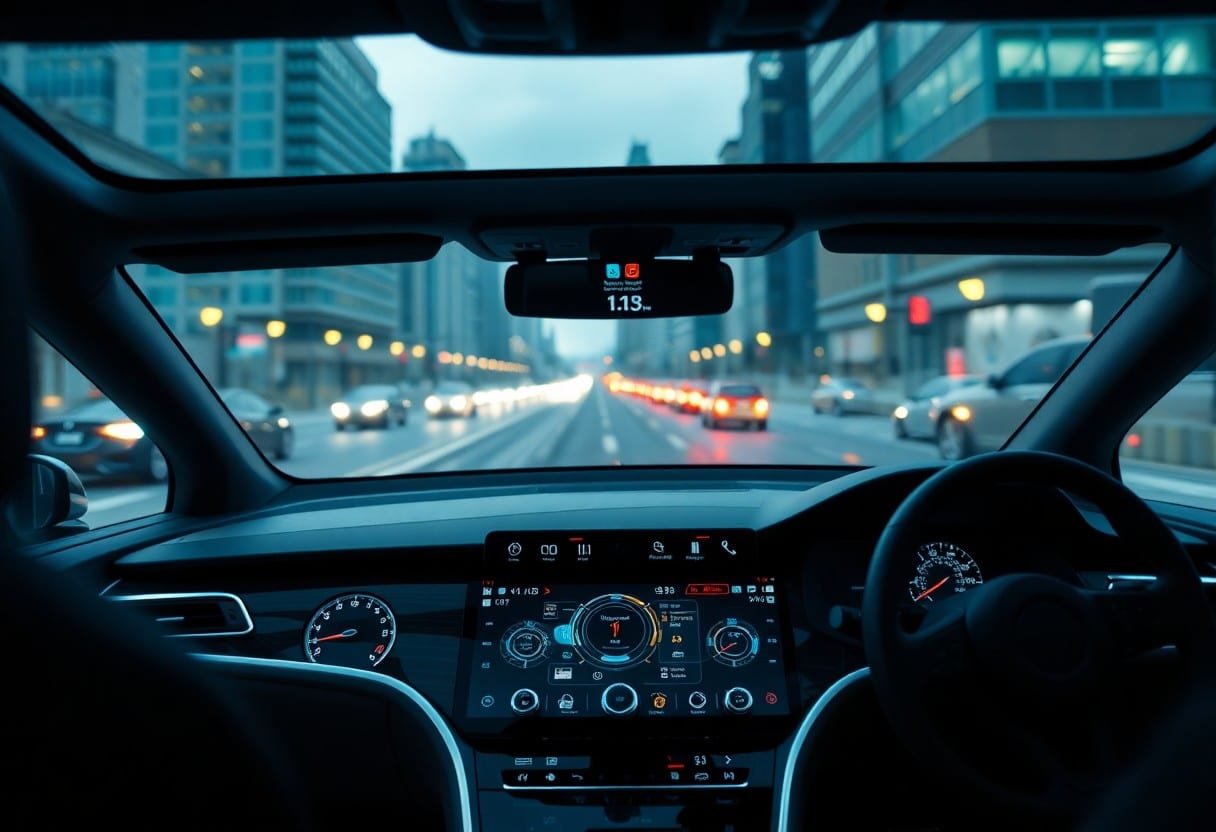
Future Of Automotive Software Architecture
The Future of Software-Defined Vehicles
The trajectory of software-defined vehicles points toward a highly adaptable automotive ecosystem, where vehicles continuously receive updates and new features long after they leave the factory. As consumer demands evolve, automakers will leverage software agility to create tailored experiences, allowing for enhanced safety, personalization, and a suite of mobility services. Future vehicles will not only respond to environmental conditions but will also interact more intelligently with other vehicles and infrastructure, paving the way for smarter transportation solutions.
Emerging Technologies and Innovations
Advanced technologies are vital in shaping the future of software-defined vehicles. Machine learning and artificial intelligence enhance real-time data processing, enabling predictive maintenance and personalized driving experiences. Additionally, innovations like 5G connectivity and edge computing provide rapid communication capabilities, facilitating interactions between vehicles and smart infrastructure, creating a cohesive ecosystem that promotes efficiency and safety in transit.
Potential Impact on the Automotive Industry
The shift to software-defined vehicles will revolutionize the automotive landscape, marking a departure from traditional manufacturing processes. Automakers will pivot from hardware-centric models to software-driven ones, where updates and feature expansions increase vehicle longevity and customer satisfaction. This paradigm shift will foster new revenue streams through software subscriptions, in-car services, and over-the-air updates, fundamentally changing the automotive business model.
This transformation will inspire traditional manufacturers to adopt agile development approaches, enabling quicker responses to market demands. Customer relationships will evolve as drivers expect continuous engagement through software updates and personalized features. Automotive ecosystems will expand, inviting collaborations between tech companies and traditional car makers, leading to innovative solutions like shared mobility and autonomous driving technologies. The implications are profound, as efficiency and consumer satisfaction redefine success in the automotive industry.
Conclusion
From above, you’ve explored how software-defined vehicles represent a transformative leap in automotive technology. This new architecture not only enhances your driving experience through advanced features but also opens the door to seamless updates and personalized services. As you look toward the future, understanding these innovations empowers you to embrace the evolving landscape of mobility and enjoy the benefits of smarter, more connected vehicles. The Future Of Automotive Software Architecture is not just a concept; it is a reality that is unfolding before us.

